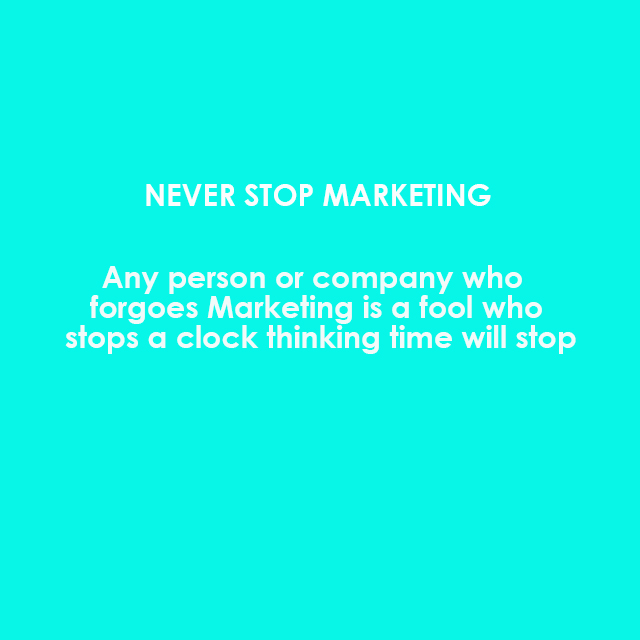These mobile security apps will help keep iOS and your apps safe from hackers
If you’ve come across these thoughts, don’t worry. We’ve been there as well! That’s why we’re throwing you our 10 Retail Marketing Strategies to help you refocus your business plans:

1. Knowing your Product and Customer
Features and Benefits
A great deal of marketing has always focused on the relationship between these two aspects. And their relationship has always boiled down to the question of “How do I sell this?”. But we’re pretty sure you’ve asked this countless times. So, we’re offering you a paradigm shift by splitting the question in two:
- “What are the features of my product?”
- “What are the benefits of my product?”.
Know your product by asking “What are the features of my Product?”. By answering this question, you get to know what about your product sells – which is half the battle of knowing how to sell your product.
Turn product features into benefits
Successful business owners know all their product’s features and skillfully turn these features into benefits for their customers
To practice this skill, list your product’s features, potential benefits and all information up front for your customer. Consider how you can communicate the potential benefits for example:
| Product Features | Possible Benefits for your Computer |
|---|---|
| Its purpose | It will satisfy either your needs or wants and save you time and money |
| How it works | It is easy to use so you won’t be frustrated by complicated features |
| How it is developed or manufactured | The materials use are all organic and locally produced in the country |
| How it is checked for quality | You can be confident it will work, It undergoes various quality testing procedures |
| How it is delivered | You don’t have to worry about delivery; we organise that for you |
| How it is maintained and serviced | You can be assured that if it needs maintenance, we will take care of it for you |
| How long it is likely to last (including any warranties) | You can be confident that if it needs maintenance, we will take care of it for you |
| Its price | You can comfortably afford it |
| How it compares to similar products the business offers | You can base you decision on the good reputation our business has earned for selling other well-regarded products |
| How it compares to competitors products | You are receiving quality and value for money |
| Its strengths and limitations (the capability of product to deliver benefits to clients) | You are buying a product that is well-matched to your particular needs |
| Other products that might complement it | Buying this companion product will allow you to meet the needs of your entire household |
Next is researching about the market you want to sell your product to. Your research should tell you about your customers and what they’re looking for. Putting the knowledge of what your product can do versus what they need will provide you the very vital insight of knowing how to market to your target consumers.
2. Tell them why they should visit your store / site

People knowing what your product can do for them is usually enough reason to go. But why stop there? Depending on your business, there are events/activities you can organize around your product to attract an even larger audience. A popular example of this are celebrity endorsements. Fans of a certain celebrity will certainly flock to see him/her, and will undoubtedly be made aware of what you can offer them.
Or, if you’re an online store, a user-centric site design that works on both desktop and mobile platforms will definitely make it easier for people to know more about your business. And if site hosting is out of the budget, Facebook, Instagram and Twitter are viable alternatives. Hosting activities that engage users like giveaways and games are as good as real-life promotional events.
3. Streamline the User Experience
This doesn’t just refer to your product, rather, the overall experience of your customer. Starbucks has good coffee, but it’s not the best. Yet they enjoy a massive following mainly because of their store’s design and the quality customer service they provide.
4. Create the Sense of Urgency
Pre-order now to get the limited edition set
Only 4 rooms left, book now!
First 100 customers get 50% off!
Consumers love a good deal, but it’s usually after some time spent scrutinizing a proposition. This time meant for careful examination can be cut by creating a sense of urgency through magnifying your product’s scarcity and what they could lose should they miss this “limited-time offer”.
5. The Call-to-Action
Be it from a sense of urgency or otherwise, reminding consumers to do something is a marketing principle set-in-stone. There will always be a need for marketers to remind potential customers to act on the product as a closer on their pitch/copy.
6. Be Culturally Relevant / Monetize Pop-Culture
We are at an age when we’re bombarded with so much news, trends and information. But it’s still a thing of wonder that there are Pop-Culture phenomena that sweep a huge chunk of the population. From Star Wars, to Donald Trump, down to the dankest internet memes, major retailers have found a way to incorporate culturally popular events and personalities into their products and services.

WHEN IT comes to heartbreak, while most men resort to drowning their sorrows in alcohol, women indulge in ice cream — loads of it.
That is the reason Paco Magsaysay, founder of Carmen’s Best ice cream, named one of his flavors “He’s Not Worth It.”
However, riding this wave can be tricky. But if done right can become a viral promotion of its own. The thought behind this tip is that it’s not enough to set yourself apart from the competition, you have to integrate with the market you want to establish yourself in as well.
7. Entertain your Shoppers
This tip might be more relevant to brick-and-mortar stores (sorry online retailers)
Entertaining shoppers within your store is a proven method of keeping their attention. This may range from simple TV screens showcasing product demos to musical events that invite a crowd that could be an untapped market for what you’re offering.
8. Go Mobile or Go Home

It’s been suggested in previous tips, but its importance warrants a number of its own.
Building mobile presence is integral to any marketing effort. The growth of smartphone users have grown over the years and it’s showing no signs of slowing down. We planned on showing you numbers but really, all you have to do is step out on a busy street or go into a restaurant and see how many people are glued to their phones.
9. Tell a Story. Make them part of it.

Al Futtaim giving a snippets of their humble beginning in every job ad they post
Everybody loves a good story, more so when they’re the subject with a good ending is store. We have to caution, however, that this isn’t a blanket marketing strategy. A storytelling copy usually applies to retail marketing for things that can store personal/sentimental value. Like cars, jewelry, houses, and has especially worked well for humanitarian advocates.
This tip borrows itself from the long-standing style of Copyrighting called The Storytelling Copy. This copy is designed to create a narrative where the copywriter can direct the thoughts and/or feelings of the target consumer to be more susceptible to the pitch.
10. Never stop Marketing

This isn’t a tip or a specific strategy. It’s a rule of thumb often taken for granted by marketers who taste their first form of marketing success. No market lead is permanent. Something new will always come up, sooner or later, and the recognition of this fact is what separates a great marketer from a decent one.
Always be on the look-out for new ideas. Never be afraid to look into what the competition is doing. So, on the next time you’re out shopping, especially on the holidays, take a moment to step back and perceive the different ads present around you. You might surprise yourself with the ideas you might come up with, just by walking along the street.

About Ivan Cano
Ivan Fredriech Cano is a Content Writer / Copywriter for an Online Entertainment group in Asia. With his university studies in intl politics, to his present-day practice in market research and copyrighting, he continues to widen his scope in the industries he writes for.
Ivan’s work focuses on technology, content marketing, online entertainment and continuously unearthing the ticks of the consumer psyche. Know more about what he’s up to by following him on social media.









7 Cloud POS Software Myths and Why They Are False